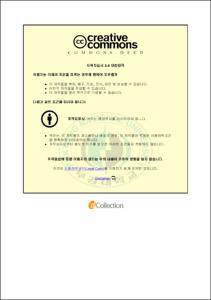EEG 실험을 통해 TV광고의 공감각 표현효과에 관한 연구
- Alternative Title
- A Study on the Effect of Synesthesia in TV Advertisements with the EEG Experiments
- Abstract
- Modern design was not only about the function, but also the image and atmosphere. It is the time to paying attention to the human emotion through the sensory experience. This, customers's five senses should be stimulated in order to appeal the emotion of customers. And the sensory experience of the consumer play an important role of communication. Practical expression of synesthesia can be classified as synesthesia of sense-transition and synesthesia of integrated.
TV advertisement was the most influential advertising media which was responsible for promoting goods and extending the brand. Such as the print media, TV advertisement was also use the synesthesia expression all the time. In addition, with the various form of expression such as dialogue, music and plot, TV advertisement makes synesthesia more intense than the print media. Then, how synesthesia express in TV advertisement and this kind of expression will take what kind of influence should be resolved as the important questions.
This thesis want to figure out these questions with the scientific method. Through the EEG which could record and analyze the brain activity, we can measurement the synesthesia with the scientific data.
Accordingly, the purpose of this thesis was to revealing how synesthesia expressed in TV advertisement and what kind of effects it takes through the EEG experiment and related questionnaires.
In conclusion, first, this paper has verificated that there is two kind of synesthesia expressed in the TV advertisement one is the synesthesia of sense-transition and the other one is the synesthesia of integrated. And the major form of expression is the synesthesia of integrated.
Second, the synesthesia of sense-transition and the synesthesia of integrated has the different EEG responses and the difference was expressed in the Gamma brainwaves. In addition, according to the big activation differences in the area of Fp1, Fp2, we can see that the impact on the cognitive processes with the synesthesia of integrated was much more large than the impact with the synesthesia of sense-transition.
Finally, through the questionnaire of the expressive effects we can see that synesthesia have a positive impact on the advertising effectiveness in TV advertisement.
- Issued Date
- 2015
- Awarded Date
- 2015. 2
- Type
- Dissertation
- Publisher
- 부경대학교
- Alternative Author(s)
- GAO YAZHEN
- Affiliation
- 산업디자인관
- Department
- 대학원 산업디자인학과
- Advisor
- 장청건
- Table Of Contents
- 목 차
제1장 서 론
1.1. 연구배경 및 연구목적 1
1.2. 연구방법 및 범위 4
1.3. 연구 구성도 및 모형도 6
1.4. 선행연구 검토 8
제2장 공감각에 대한 이론적 고찰
2.1. 공감각(Synesthesia)에 대한 이해 11
2.2. 공감각의 형성요인 15
2.3. 공감각의 개념 및 유형 19
2.4. 공감각의 특성 22
2.5. 공감각의 연상 작용 25
제3장 TV광고에 관한 이론조사
3.1. TV광고의 개념 및 특성 26
3.2. TV광고의 표현유형 27
제4장 연구 설계
4.1. 실험방법의 상관 사전조사 32
4.1.1 EEG 기본원리 32
4.1.2 뇌파 측정방법 33
4.2. 실험물의 상관 사전조사 44
4.2.1 실험물의 제품 범위 44
4.2.2 제품의 시장 현황 46
4.2.3 공감각적 광고 실험물 선정 47
4.3. 실험설계 및 준비 53
4.3.1 실험개요 53
4.3.2 실험절차 54
4.3.3 실험장비 및 측정설치 55
제5장 연구 결과와 분석
5.1. 공감각 조사 분석결과 58
5.2. EEG 실험결과 64
5.2.1 뇌파 분석 64
5.2.2 광고별 결과 분석 66
5.3. 광고효과에 대한 설문 조사 및 결과 70
5.3.1 조사를 위한 문헌검토 70
5.3.2 광고효과 설문지의 작성 73
5.3.3 광고효과 설문조사 결과 75
제6장 결론
6.1. 연구의 종합 78
6.2. 향후 과제 80
참고문헌 81
Abstract 86
부록 89
- Degree
- Doctor
- Files in This Item:
-
-
Download
 EEG 실험을 통해 TV광고의 공감각 표현효과에 관한 연구.pdf
기타 데이터 / 2.91 MB / Adobe PDF
EEG 실험을 통해 TV광고의 공감각 표현효과에 관한 연구.pdf
기타 데이터 / 2.91 MB / Adobe PDF
-
Items in Repository are protected by copyright, with all rights reserved, unless otherwise indicated.